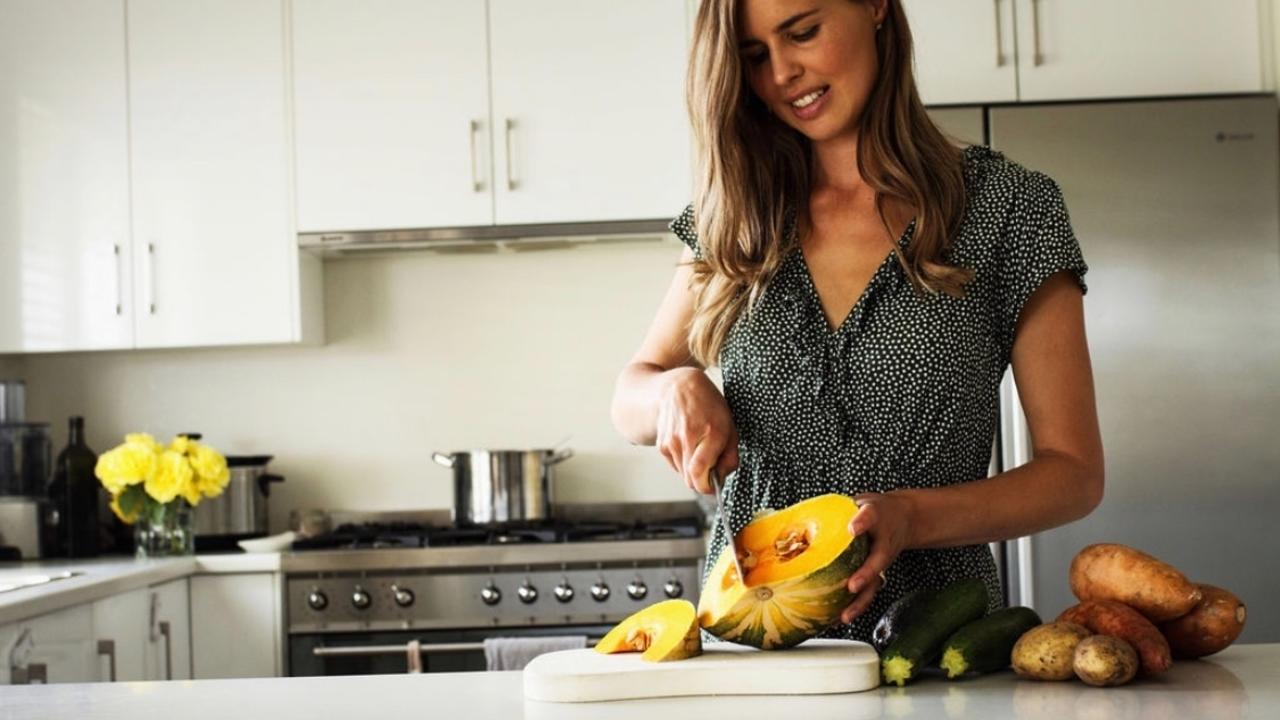How to Keep Your Produce Fresher for Longer

You arrive home, proud of your recent fresh vegetable and fruit purchase and happy to see the fridge is full for nourishing meals you have planned for the days ahead. I know that feeling!
But a few days later you go to whip up your fav meal, only to find your once fresh produce is now looking rather limp. How frustrating and what a waste 😩
If this happens to you regularly and you want to get the most out of your shop but also consider your health, keep your vegetable purchases as fresh as possible by following these handy storage guidelines.
Healthy Swaps
Avoid Using:
- Alfoil
- Plastic wrap
- Plastic container use
Note: If plastic wrap is required, avoid the food touching the wrap. Placing a brown paper bag between the food and the plastic is an option.
Replace With:
- Glass containers
- Ceramic containers and bowls
- Stainless steel containers and bowls
- Brown paper bags
- Tea towels
Washing Your Produce
Always wash your vegetables before preparing. You can do this just after you purchase (for those stored in the fridge), and therefore allow drying before you put away. If they are left wet, this will encourage growth of mould. Otherwise wash produce just before preparation.
Vegetable scrubbers are a good idea to help remove any pesticide residues, as is adding a dash of apple cider vinegar or food grade hydrogen peroxide to your water. You can pick scrubbers from fruit and vegetable shops, as well as health food stores.
Storage
Wash, Dry (in a spinner is best) and wrap in a damp tea towel:
- Leafy vegetables (lettuce varieties, spinach, kale)
- Then you should store in a glass container, in the ‘crisper’ section of the fridge
- Keep lettuce well away from melons, apples or pears, to avoid any browning of the leaves
Keep these ones upright, in shallow water (such as a glass):
- Asparagus
Keep these on the counter:
- Tomatoes
Note: If needed, you can refrigerate tomatoes to extend their freshness, however much of the flavour will be lost.
Keep these in a dark, cool spot (pantry):
- Garlic
- Onions
- Potato
- Shallots
- Sweet potato
- Pumpkin
- Squash
Note: Once cut, refrigerate squash and pumpkin in an airtight container.
Keep towards the front of your fridge, in an airtight container:
- Peas
Keep in a bottom ‘cripser’ section, where the fridge has it's highest humidity:
- Artichokes
- Beetroot
- Broccoli
- Cabbage
- Carrots (store in a separate glass airtight container within this section of the fridge).
- Cauliflower
- Capsicum (store in a separate glass container for optimal freshness).
- Celery (store in a separate glass airtight container within this section of the fridge).
- Chilli
- Cucumber
- Eggplant
- Fresh herbs
- Green beans (store in a separate brown paper bag within this section of the fridge).
- Leeks
- Lettuce
- Mushroom
- Radish
- Spring Onion
- Summer squash
- Turnip
- Zucchini
To Freeze Fruit:
- Place the whole/ cut up fruit in a stainless steel bowl, and cover with a tea towel
- Freeze strawberries on a tray with baking paper and once frozen, move them into an airtight glass container
- When you have an excess, peel, puree and freeze very ripe avocado in an airtight container to defrost later to use in dips and as a spread. You can also peel and slice avocado in half, to freeze and add frozen to smoothies.
- Peel, chop and freeze banana in an airtight glass container to add into smoothies later on
Other Storage & Ripening Tips
- Store apples in a brown bag/ glass container and away from other strongly scented fruits and vegetables.
- Ripen bananas on your kitchen counter and then transfer to the fridge. You will notice the skin will continue to ripen (turning black), however the fruit itself will only slightly further ripen. If you need to speed up the ripening phase, put your bananas in a brown paper bag and store in a warm place.
- Remove any spoiled grapes before storing in the fridge and/ or freezer.
- Ripen kiwis (if required) in a brown bag with banana, apple or pear and then place in the fridge, away from other fruits.
- To ripen mango quickly, place them in a brown paper bag, with another mango, banana, or pear, in a cool temperature. Otherwise leave in a cool temperature and transfer to the fridge once softened. You can do this with avocado as well (in a brown bag with a banana).
- Do not remove the seeds of any cut melon, to ensure it remains moist and store in an airtight container in the fridge.
- Oranges do best in cool temperatures out of the fridge if consumed within 3 days, otherwise for longer when stored in a brown paper bag and in the fridge.
- Pears will ripen quickly when placed in a brown bag with ripe bananas, and best transferred to the fridge once ripe.
- Store strawberries in the fridge straight away (after washing well). The best way is to place them on a tea towel, in layers and in an airtight container.
Keep It Fresh
Aside from growing your own, buying seasonal, local and organic foods, you can optimise the freshness, nutrition and taste of your next vegetable shop by considering your storage techniques.
Now you’ve got your fresh produce, do you need some meal inspo?
Find age appropriate gut healing meal ideas in my baby health guide, Thriving Bubba and pregnancy nourishment within my online program, Path To Glowing Mumma.




